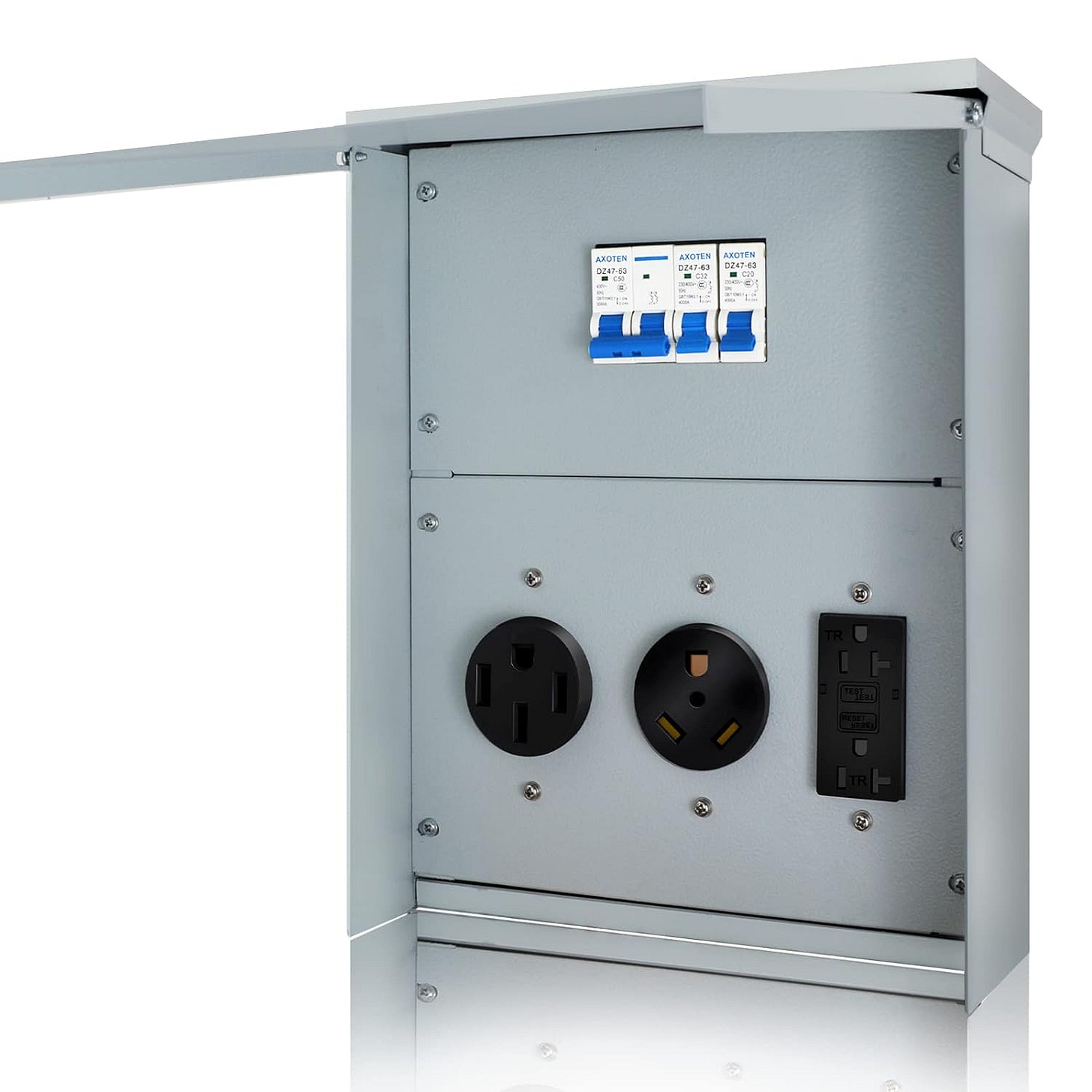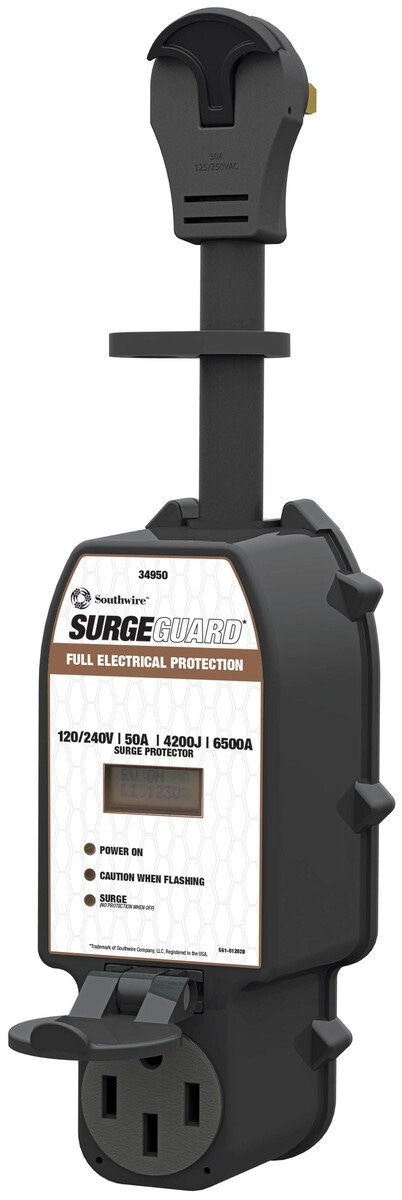Basic pedestal testing procedures…
What to test for when you're connecting to shore power!
Hey Mike,
I really appreciate the information on electrical safety. On your recommendation, I purchased a smart surge protector as well as a couple of NCVTs. (Gotta have one for around the stationary house, as well!) Given the fact that the surge protector can detect a number of problems with the power source, what would be a good protocol for using them in combination? Would it be wise to start by checking the power pedestal with the NCVT first? Thanks for your advice. —Chuck Barke
Dear Chuck B.,
Here’s the power testing sequence I can recommend for the general public.
Step 1
Before you pull into your camping spot take your NCVT (Non Contact Voltage Tester) for a quick, hands-off check of the campground pedestal for hot-skin/stray-voltage. Turn on your NCVT and make sure the batteries are OK by checking the indicator light and listen for a beep. Don’t touch the pedestal box with your hands yet until you confirm it’s not electrically hot. No need to scrape or rub the tip of NCVT on the metal box, and the circuit breakers don’t have to be on at this point.
IF THE PEDESTAL BOX has more than 30 volts hot-skin on it, then you should get an NCVT alert if you make contact or even get close to the metal. If that happens, DO NOT touch the pedestal box with your hand or pull your RV into the campsite and hope that it will be fixed before you’re all set up. Get the campground manager and show them what you’ve found, then ask for another campsite if they can’t fix it immediately !
Step 2
Next, if you have a portable Intelligent / EMS Surge Protector, take it over to the pedestal and plug it in, then flip the circuit breakers on.
Or use your digital meter
Review how to use a digital meter HERE.
If you don’t have an Intelligent/EMS, then it’s time to get your Digital Multimeter (DMM) and test the outlet for proper voltage and polarity. If it checks out as OK, then you can turn off the pedestal circuit breakers and proceed to drive your RV onto the pad to get set up. If your test shows really low voltage, high voltage, reversed polarity, or an open ground, then don’t pull into the campsite. Get the campground manager and show them the problem.
Step 3
Once your RV is in position and you’ve confirmed the pedestal circuit breakers are off, go ahead and plug your shore power cord into the outlet, then flip the circuit breakers on. Pull out your NCVT again and touch it to the bumper, hitch or wheels of your RV to confirm that the chassis/skin of your RV doesn’t have a hot-skin/stray-voltage due to a break of the ground wire in your own shore power cord or adapters. If it beeps, then there’s something wrong in your shore power cordset or adapter. Disconnect your RV from shore power until you can determine the cause of the hot-skin/stray-voltage.
You’re all done…
This test procedure, which will add only a few minutes to your load-in time, should virtually guarantee a safe power hookup under 99.9% of all circumstances I can imagine. And if anything changes while you’re there, your Intelligent EMS/Surge Protector should warn you and disconnect your RV from the incoming power.
Yes, I need to make a video of this procedure as well. It’s on my honey-do list.
Let’s play safe out there… Mike








What about campgrounds that have no access to breakers? We used to stay near our daughter at a county ran fairgrounds that had spots available year around. They had 50, 30. 20 amp but no breakers for the 50. 30 and 20 were in the box. I'm guessing the 50's were added later. I just killed my mains, plugged and prayed. I mentioned this to the caretaker and was told just to contact him if needed. Daughter since moved so we no longer stay there but always wondered.